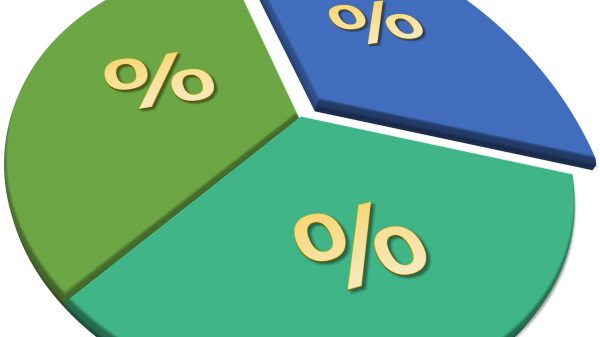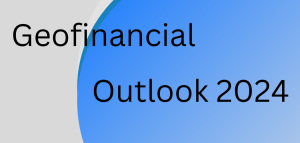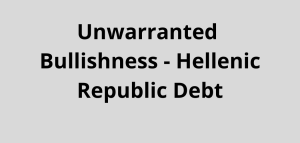By Pascal vander Straeten November 22, 2023
The magus is an ancient sorcerer or magician, and the title implies that low volatility could possess the magic to predict a financial crisis.
Bearing in mind the severity of the aftershocks of the 2007-2008 systemic financial earthquake that continued to be felt years across many parts of the world, it would be helpful to have a set of “early warning indicators” to tell us what countries are most vulnerable (Frankel and Saravelos, 2010).
Indeed, the Global Financial Crisis in 2007-2008 bushwacked every observer and market participant. Until 2007 markets had come to believe that crises were part of history and that the regulations and institutional structure shielded the markets. Alas, the 2007-2008 crisis proved all of this wrong. Since then, passionists like pundits and I, have been searching for techniques to foretell that a crisis might be underway, so the prudential authorities and private institutions can prepare themselves.
One of the critical tools for which I always had a weak spot is the Early Warning Indicators (EWI) of crises, which earned some prestige in the wake of the Asian crisis 1998. If those tools would have been in place in 2007-2008, the occurrence or severity of the crisis could have been mitigated.
At the risk of oversimplification, I could label these EWIs into two main groups:
- First is a group of EWIs that are exclusively data-driven and based on market data indicators, such as bond yields, stock prices, CDS spreads, commodity prices, macroeconomic indicators, and volatility.
- The second group utilizes economic theory to shape the indicator design, looking more at how risk surfaces in the first place.
The Basel Committee indicates that EWIs are essential for implementing time-varying macroprudential policies, such as countercyclical capital buffers, that can help reduce the high losses associated with banking crises. EWIs in this context must not only have sound statistical forecasting power but also need to satisfy several additional requirements. For instance, signals need to arrive early enough so that policy measures have enough time to be effective, and these signals need to be stable as policymakers tend to react to trends.
Economic theory is utterly clear on where we should look for crisis symptoms. Both Keynes (1936) and Hayek (1960) indicate that perceptions of risk – mainly when they differ from what economic agents have come to anticipate – affect risk-taking behaviour. Maybe the best expression of this view is Minsky’s (1977) ‘instability assumption’, where economic agents observing low financial risk are encouraged to increase their risk appetite, which may result in a crisis – the premise of his famous axiom that ‘stability is in essence destabilizing.’
The relatively recent writings achieve similar conclusions, for instance, with Brunnermeier and Sannikov’s (2014)’ volatility paradox’ and also with Bhattacharya’s et al. (2015) study of Minsky’s assumption. Similarly, Danielsson et al. (2012) consider a general equilibrium architecture with risk constraints; after observing low volatility, agents are endogenously incentivized to take more risk.
At inception, economic agents observe that volatility is lower than what they have come to anticipate. This gives way to optimism, making the agents more bullish to take risks. This is manifested within the financial services sector, which will lend more than before and underwrite riskier loans. Eventually, loan defaults increase and potentially a banking crisis ensues when volatility rises discernibly.
This chain of events suggests that a considerable time occurs between observing a period of low volatility and the timing of a crisis. By contrast, a representation of high volatility directly erupts from a crisis, implying that it is already too late to react by the time volatility peaks.
Most empirical literature on EWI takes the contrarian view that the probability of crises increases along with quantified risk, typically measured by ex-post findings in financial markets, such as price movements or volatility, CDS spreads, VIX, volumes, and other activity measures (cf. good illustrations are both the ECB’s systemic risk composite indicator and the SRISK (Acharya et al. 2012)). Academic writing suggests that such indicators are most likely to be of limited use. They indicate a high risk once a crisis is underway but do not provide much regarding ex-ante prediction, limiting their effectiveness.
A counter-argument might be that a specific indicator provided a strong signal for the events of 2007-2008. However, that is one observation with multiple degrees of freedom for optimization, calculated ex-post. It is plain sailing to use the benefit of hindsight to develop a measure that forecasts a single known crisis event in history. However, such signals are unlikely to capture the proliferation of systemic risk that results in future crises.
The theoretical literature has inspired several recent studies in the setting of EWIs. The most encouraging ones are those that connect credit expansions to crises, as described by Schularick and Taylor (2012) or Baron and Xiong (2017), where over-optimism increases the probability of a financial crisis.
In a relatively recent paper, one step further was taken (Danielsson et al. 2018). They take a historical perspective, utilizing data going back to 1800 deemed available and sixty countries, examining the probability of crises as a function of volatility. As a starter, they study the relationship between current volatility and the probability of future crises – what could be labelled as the linear volatility crisis view. But the data sets rebuff this. When linked with macroeconomic variables to capture the state of the economy, volatility is not a crucial magus of crises.
Nonetheless, a disparate picture surfaces by decomposing volatility into a trend and deviations from a trend. The underlying reason is that economic agents look at the pattern as ‘usual/expected’ volatility and risk-taking behaviour is impacted when it deviates from the trend. That leaves two kinds of volatility: low volatility when it is below the trend and high volatility when it is above the pattern.
The slope of the curve, which converts into regression coefficients in a statistical model, shows the strength of the relationship. The higher the slope in absolute numbers, the more likely a crisis will occur as volatility moves away from its trend. Danielsson et al. (2018) find substantial proof for low volatility but only weak evidence for high volatility resulting in crises. The macroeconomic impact is the highest when the economy stays in the low volatility environment for five years: a 1% decrease in volatility below its trend corresponds to a 1.01% increase in the likelihood of a crisis.
These results suggest that volatility would not be a good crisis indicator. It might tell policymakers that a crisis is underway, but they will realize that anyway. A traditional method to evaluate the quality of EWIs is the area under the receiving operating curve (AUROC). For example, an AUROC value of 0.5 indicates that an EWI is no better than random noise, while several 1.0 implies stellar predictability. According to Danielsson et al. (2018), low volatility has an AUROC value of 76%, with a 95% confidence interval of [72%, 80%]. This means that it yields a reliable signal to policymakers for the incidence of an upcoming crisis.
In conclusion, within the post-GFC macroprudential agenda, policymakers are actively looking for future financial and economic instability indicators and developing policy instruments to mitigate the most unfortunate results. Most early warning indicators of crises are based on ex-post market data, typically volatility in some form or another, where increasing volatility highlights that the financial system has become riskier, and a crisis is, therefore, more probable. A significant cause of financial crises is excessive risk-taking by economic agents. When they perceive a low-risk environment, they are endogenously incentivized to take more risks, culminating in a financial/economic emergency.
P.S.
Policymakers have voiced this view. “Volatility in markets is at low levels…to the extent that low levels of volatility may induce risk-taking behaviour…is a concern to the Committee and me.” (Moran, 2020)
Observation of low-risk is a significant crisis predictor and is suitable for an early warning indicator. Therefore, the policy authorities and private institutions would benefit from utilizing low volatility as a crisis signal since an observation of current low volatility means that a future crisis is more probable.
Sources:
- Baron, M. and Xiong, W., 2017. Credit expansion and neglected crash risk. The Quarterly Journal of Economics, 132(2), pp.713-764.
- Bhattacharya, S., Goodhart, C.A., Tsomocos, D.P. and Vardoulakis, A.P., 2015. A reconsideration of Minsky’s financial instability hypothesis. Journal of Money, Credit and Banking, 47(5), pp.931-973.
- Brunnermeier, M.K. and Sannikov, Y., 2014. A macroeconomic model with a financial sector. American Economic Review, 104(2), pp.379-421.
- Danielsson, J., Valenzuela, M. and Zer, I., 2018. Learning from history: Volatility and financial crises. The Review of Financial Studies, 31(7), pp.2774-2805.
- Frankel, J. and Saravelos, G, 2010 Reserves and other early warning indicators work in crisis after all. Vox, pp.1-8.
- Hayek, F.A., 1960 The Constitution of Liberty. na.
- Keynes J.M., 1936 The General Theory of Interest, Employment and Money. London: Macmillan.
- Minsky, H.P., 1977 The financial instability hypothesis: An interpretation of Keynes and an alternative to “standard” theory. Challenge, 20(1), pp.20-27.
- Moran, C., 2020 Minsky’s Moment, Exploring Economics. Available at https://www.exploring-economics.org/de/entdecken/minskys-moments/ (Downloaded: 22 November 2023).
- Schularick, M. and Taylor, A.M., 2012. Credit booms gone bust: monetary policy, leverage cycles, and financial crises, 1870–2008. American Economic Review, 102(2), pp.1029-1061.






